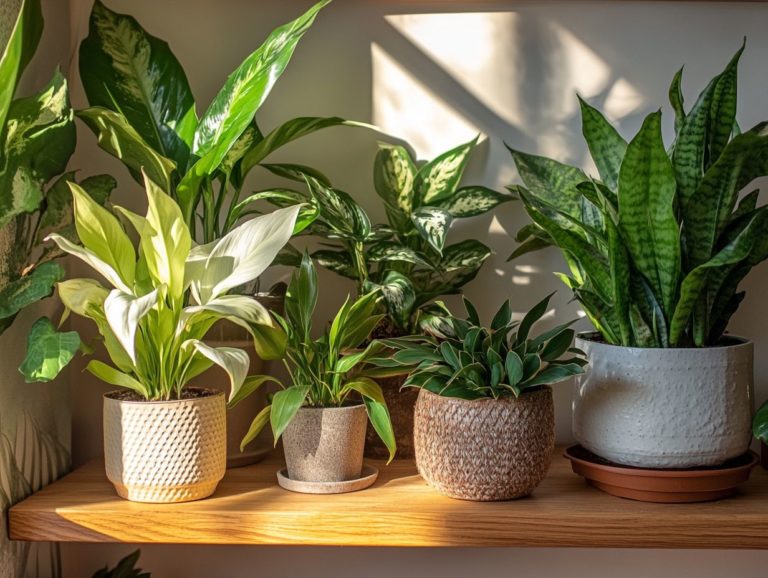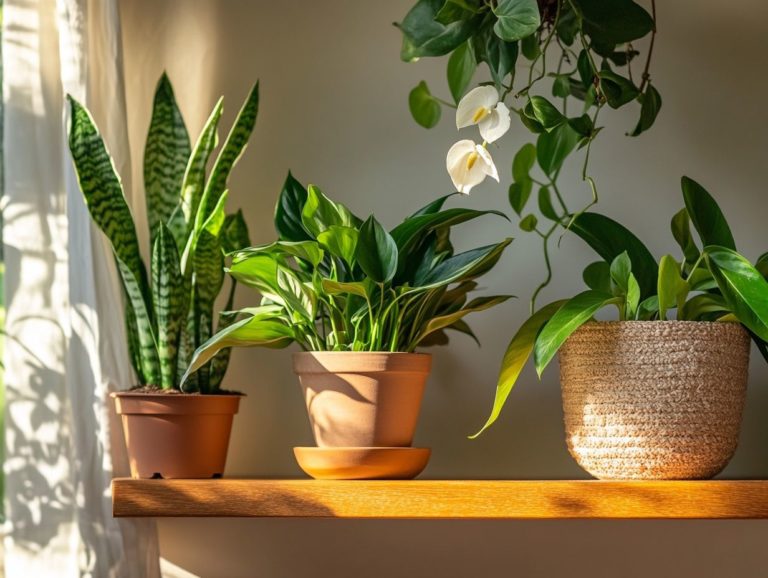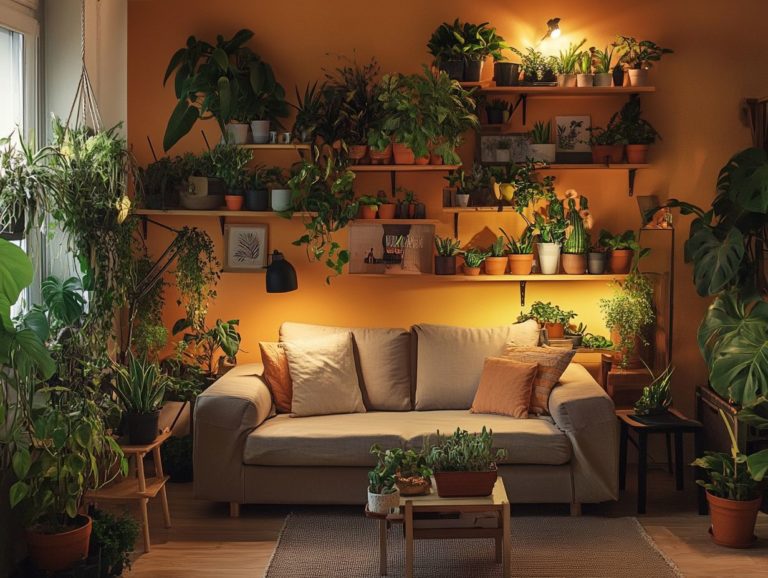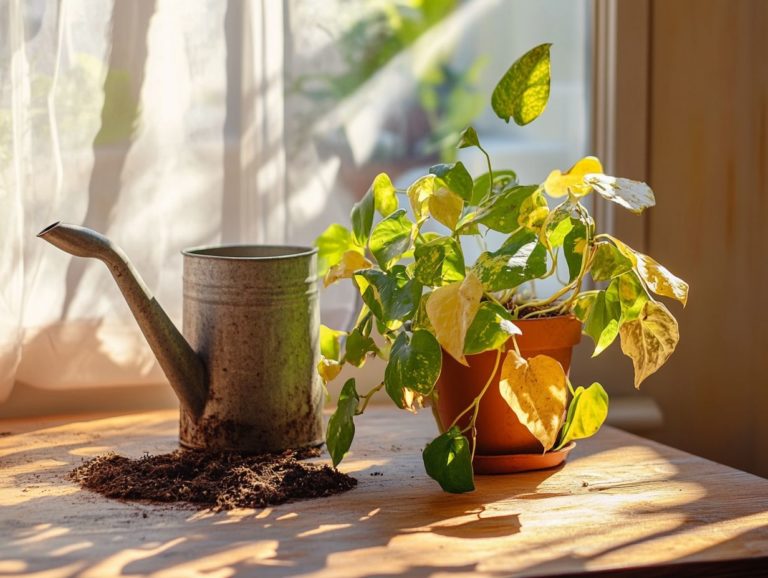How to Diagnose Indoor Plant Problems?
Indoor plants can truly transform your space, infusing it with life and vibrancy. Yet, even the most seasoned plant enthusiasts can find themselves struggling with challenges that leave them scratching their heads.
From pesky pests to nutrient deficiencies, grasping the symptoms and underlying causes of common indoor plant issues is crucial for maintaining a thriving green sanctuary. This guide will empower you to diagnose problems, recognize signs of distress, and apply effective solutions, ensuring your plants stay healthy and vibrant.
Explore practical tips for prevention and management, turning your indoor garden into a source of joy rather than frustration.
Contents
- Key Takeaways:
- Spotting Indoor Plant Problems Early
- Diagnosing Plant Diseases
- Diagnosing Nutrient Deficiencies
- Diagnosing Pest Infestations
- Preventing and Managing Indoor Plant Problems
- Frequently Asked Questions
- What are some common signs of indoor plant problems, such as dropping leaves or crispy growth?
- How do I identify the cause of my indoor plant problems?
- What can I do if my indoor plant is not getting enough sunlight?
- How can I tell if my indoor plant has a pest infestation?
- What should I do if I suspect my indoor plant has a disease?
- How can I prevent future indoor plant problems?
Key Takeaways:
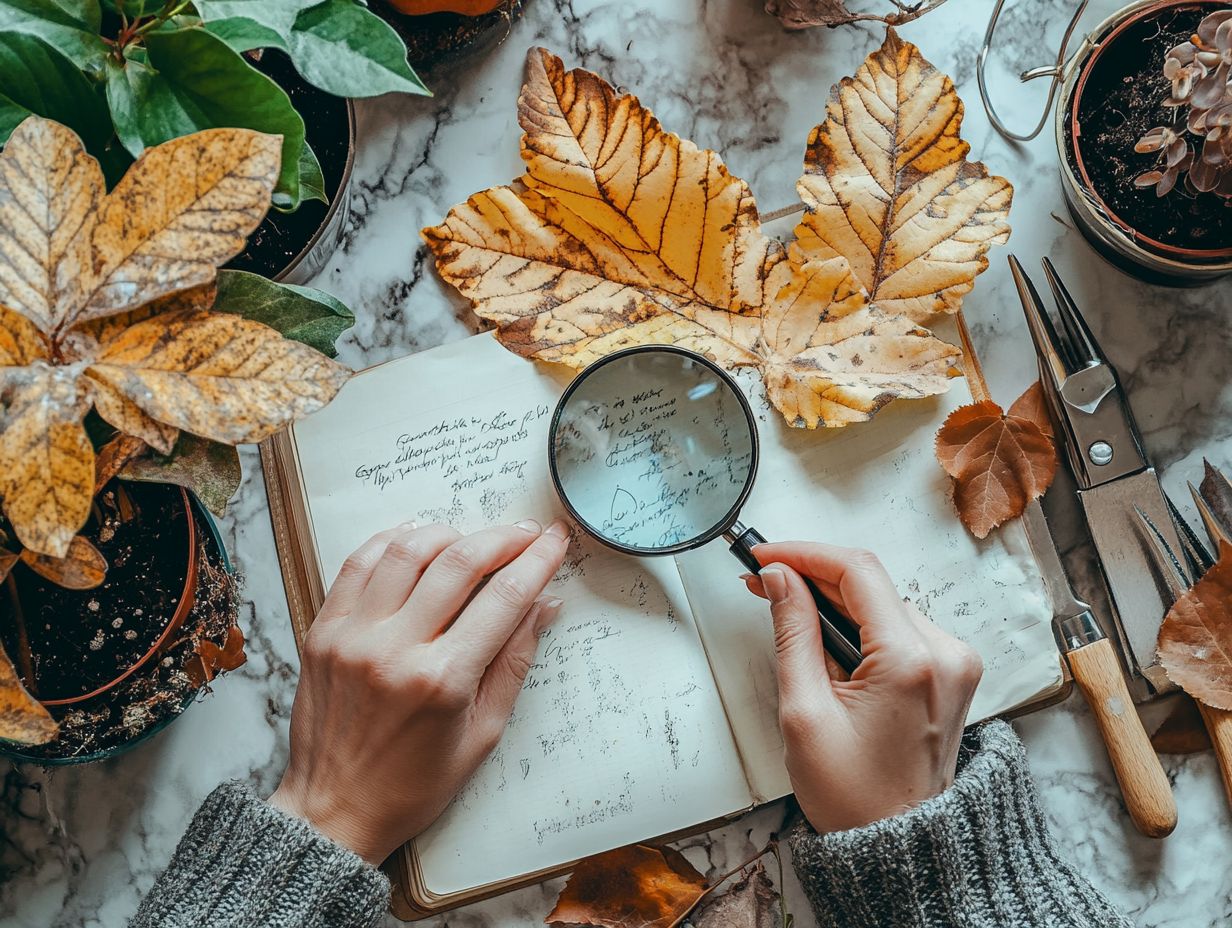
- Be observant of your indoor plants’ symptoms and causes to identify potential problems.
- Familiarize yourself with common plant diseases, nutrient deficiencies, and pest infestations to effectively diagnose and treat them.
- Regularly check for signs of nutrient deficiencies and provide proper solutions to maintain healthy plants.
- Understand the different types of pests and employ proper control measures to prevent and manage infestations.
- Take proactive steps to prevent indoor plant problems by maintaining a healthy environment and following proper care tips.
Spotting Indoor Plant Problems Early
Identifying common indoor plant problems is crucial for sustaining a vibrant plant collection. Many houseplants reveal their distress through yellowing leaves, leaf drop, or distorted growth when they encounter unfavorable environmental conditions.
By understanding the underlying causes, whether it’s overwatering, insufficient light, or inadequate humidity, you can greatly enhance your indoor gardening success. Additionally, knowing how to identify and treat soil of indoor plants allows you to recognize these issues early on and take proactive measures, ensuring that your cherished indoor plants thrive and flourish.
Symptoms and Causes
Understanding the symptoms and causes of indoor plant problems is essential for effectively diagnosing and treating any issues. Symptoms such as yellowing foliage, weak spindly growth, and pesky tiny flying bugs often signal underlying problems.
By recognizing signs of root rot (when roots become mushy and brown due to overwatering), powdery mildew (a white, powdery fungus), or pest infestations like aphids, mealybugs, and spider mites, you can craft a targeted plan for disease management and ensure the long-term health of your plants. Additionally, being aware of the signs of aging in indoor plants and solutions can further aid in their care.
Beyond these symptoms, yellowing leaves may indicate nutrient deficiencies or overwatering, while dropping leaves can reflect environmental stressors such as inadequate lighting or sudden temperature fluctuations. Pay attention to shiny residues on leaves; these could be honeydew excreted by pests, which can lead to complications like sooty mold growth.
Being proactive in diagnosing these issues not only enhances the vitality of your indoor plants but also deepens your understanding of plant care. For a better grasp, refer to this quick guide to common indoor plant issues, ultimately resulting in a thriving indoor garden.
Diagnosing Plant Diseases
Diagnosing plant diseases is an essential step in cultivating a flourishing indoor garden, as many popular houseplants can easily succumb to a range of fungal afflictions that threaten their vitality. You might notice symptoms like powdery mildew, unsightly leaf spots, or yellowing leaves, all of which demand your immediate attention.
By familiarizing yourself with the specific ailments impacting your plants and mastering effective treatment methods such as applying neem oil or insecticidal soap, you can effectively halt further decline and encourage a robust recovery. For more assistance, check out these top tips for indoor plant care troubleshooting. Start identifying your plant issues today for a healthier indoor garden!
Common Diseases and Treatments
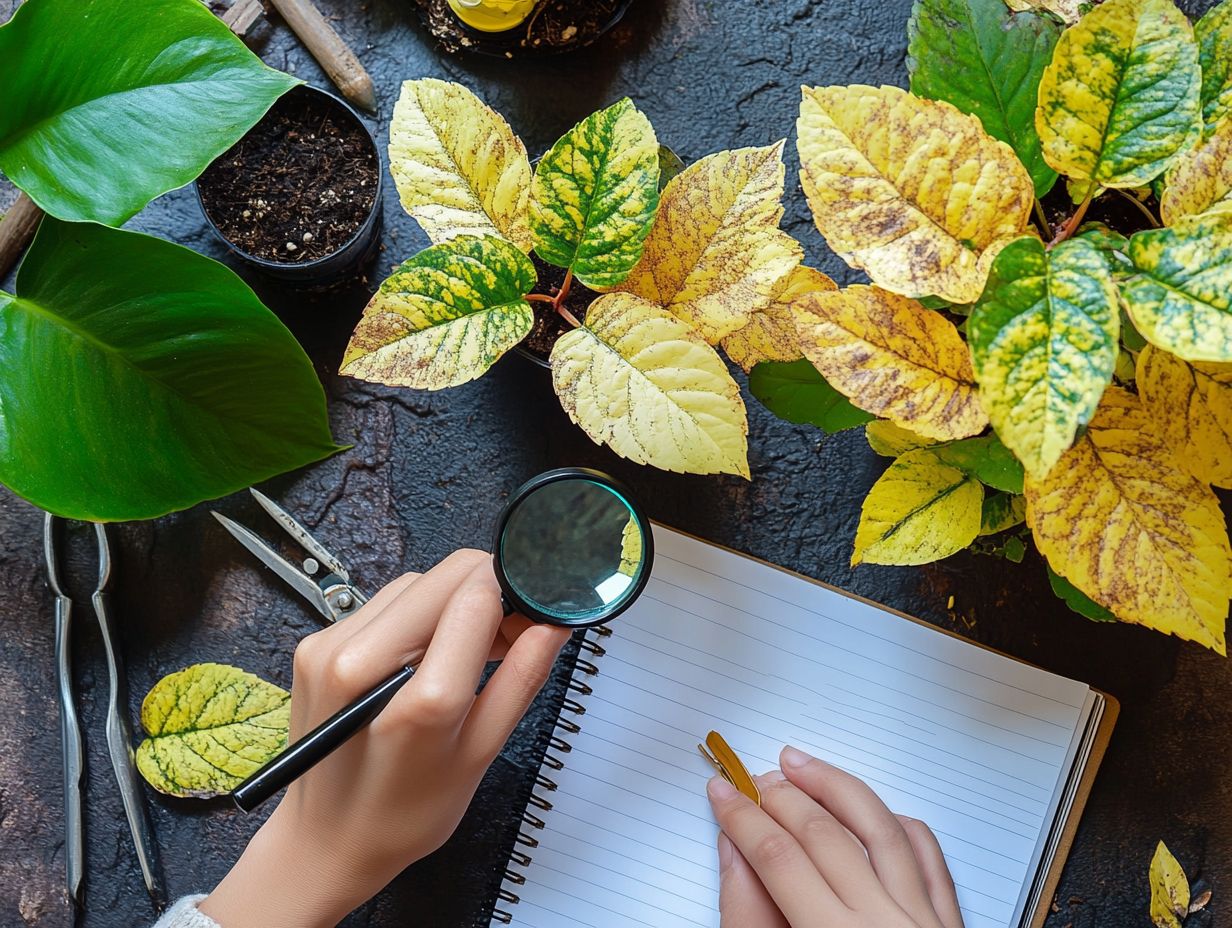
Common diseases that plague houseplants, such as powdery mildew, root rot, and leaf spots, can drastically impede their growth and overall vitality. Each of these ailments poses its own unique challenges and offers a range of treatment options. Treatment often necessitates adjustments to factors like humidity, air circulation, and watering routines.
Understanding the specific symptoms related to these conditions is vital for early detection. For example, powdery mildew typically shows up as white, powdery spots on leaves. In contrast, when to worry about your indoor plant often reveals itself through wilting or yellowing foliage, signaling trouble beneath the soil.
Your treatment options can be tailored to each issue. You can use fungicides to kill fungi causing powdery mildew, practice careful pruning to trim affected leaves, and ensure proper drainage to address root rot.
Preventive measures are equally essential. Maintaining optimal humidity levels, using fans to improve air circulation, and sticking to a proper watering routine can significantly reduce the risk of these common houseplant diseases. To learn more about addressing specific issues, check out this guide on how to overcome indoor plant stress. This promotes robust growth and health throughout your indoor garden.
Diagnosing Nutrient Deficiencies
Diagnosing nutrient deficiencies in your indoor plants is essential for fostering robust growth. When you notice signs like yellowing leaves or weak development, it often indicates an imbalance in vital nutrients, which are essential for plant health.
By familiarizing yourself with the symptoms of these deficiencies and understanding how environmental factors influence soil moisture and nutrient availability, you can take proactive measures to address the issue.
Mastering the art of plant care gives you the power to maintain optimal conditions for nutrient uptake. This enhances the vitality of your greenery.
Recognizing Signs and Providing Solutions
Recognizing signs of nutrient deficiencies, such as yellowing foliage or stunted growth, is crucial. This awareness allows you to provide effective solutions and keep your plants healthy. By monitoring soil moisture and following a proper care routine, you can prevent nutrient imbalances and encourage robust plant growth.
Make it a habit to check for signs like browning leaf tips or flaking stems, as these may indicate underlying issues. To effectively combat these problems, you can learn how to identify common indoor plant pests. Tailoring your watering schedule to meet the specific needs of each plant can significantly boost nutrient uptake. For instance, ensuring excellent drainage while maintaining appropriate moisture levels creates a healthier environment, allowing your plants to flourish.
Using organic fertilizers suited to your plants’ requirements can provide essential nutrients. This enhances their vitality and vigor over time.
Diagnosing Pest Infestations
Diagnosing pest infestations is an essential element of caring for your houseplants. Those tiny flying nuisances can wreak havoc if not promptly addressed. Common pests include:
- Aphids
- Mealybugs
- Spider mites
- Thrips
By identifying the specific pests troubling your indoor plants, you can implement effective control measures that safeguard the health of your collection. Understanding their life cycles and behaviors enables you to craft a proactive management strategy, ensuring your plants thrive in a pest-free environment.
Types of Pests and Control Measures
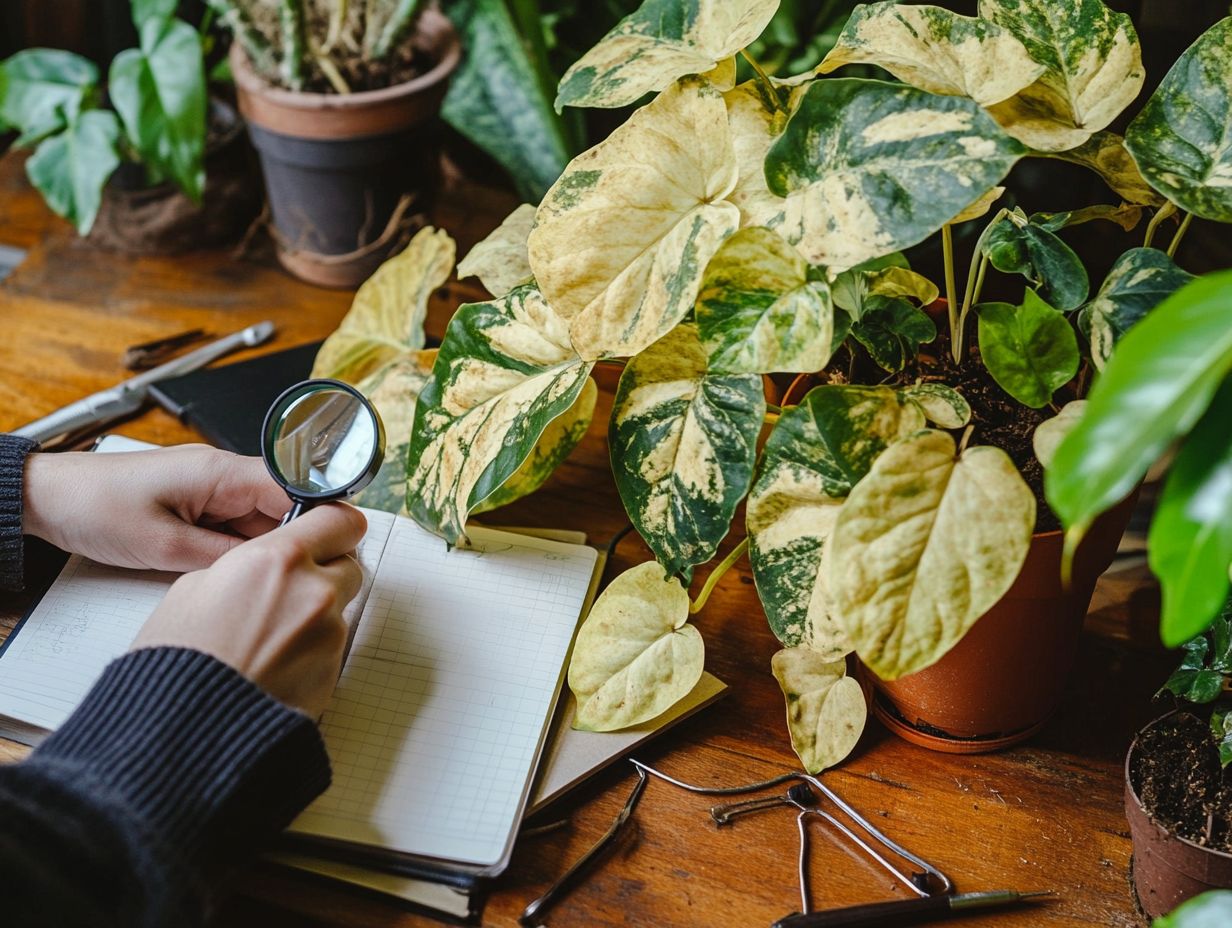
Understanding the types of pests that commonly invade indoor plants such as aphids, mealybugs, and spider mites is crucial for maintaining a thriving plant environment. Implementing control measures like neem oil and insecticidal soap will help you quickly tackle these pests while establishing preventative strategies to keep your plants safe.
Other troublemakers include whiteflies and fungus gnats. Look for yellowing leaves, stunted growth, or sticky residues on your foliage; these are clear signals that something is amiss. To avoid common issues, check out indoor plant care mistakes and solutions.
Adopting an organic approach to pest management like introducing beneficial insects (like ladybugs) or using diatomaceous earth (a natural pesticide) creates a balanced ecosystem. Pairing these techniques with regular monitoring and proper watering practices not only deters pests but also enhances the overall vitality of your plants. For more detailed strategies, check out our guide on indoor plant care troubleshooting. This holistic strategy will elevate your indoor gardening game.
Preventing and Managing Indoor Plant Problems
Preventing and managing indoor plant issues requires a clear understanding of care techniques that nurture a thriving plant environment. Regularly evaluate key factors such as your watering schedule, humidity levels, and air circulation to address common houseplant challenges.
Embracing a proactive mindset and integrating best practices will empower you to maintain the long-term health and vitality of your indoor plants.
Tips for Maintaining Healthy Plants
Maintaining a healthy plant involves embracing best practices and understanding plant care for each species. Providing adequate light conditions, establishing a consistent watering routine, and ensuring proper drainage holes are essential elements of plant care.
Assess the specific lighting needs of each plant. Some thrive in direct sunlight, while others prefer indirect light. This distinction plays a crucial role in their growth and happiness. A consistent watering schedule is vital, but don’t overlook the type of soil; it’s key to moisture retention and overall plant health. If you encounter issues, refer to indoor plant problems: when to seek help for guidance.
Humidity is also important. For many tropical plants, maintaining higher humidity levels mimics their natural environment, resulting in healthier leaves and vibrant growth. Focus on these tailored care methods to prevent common issues and foster a thriving indoor ecosystem that showcases your green thumb.
Frequently Asked Questions
What are some common signs of indoor plant problems, such as dropping leaves or crispy growth?
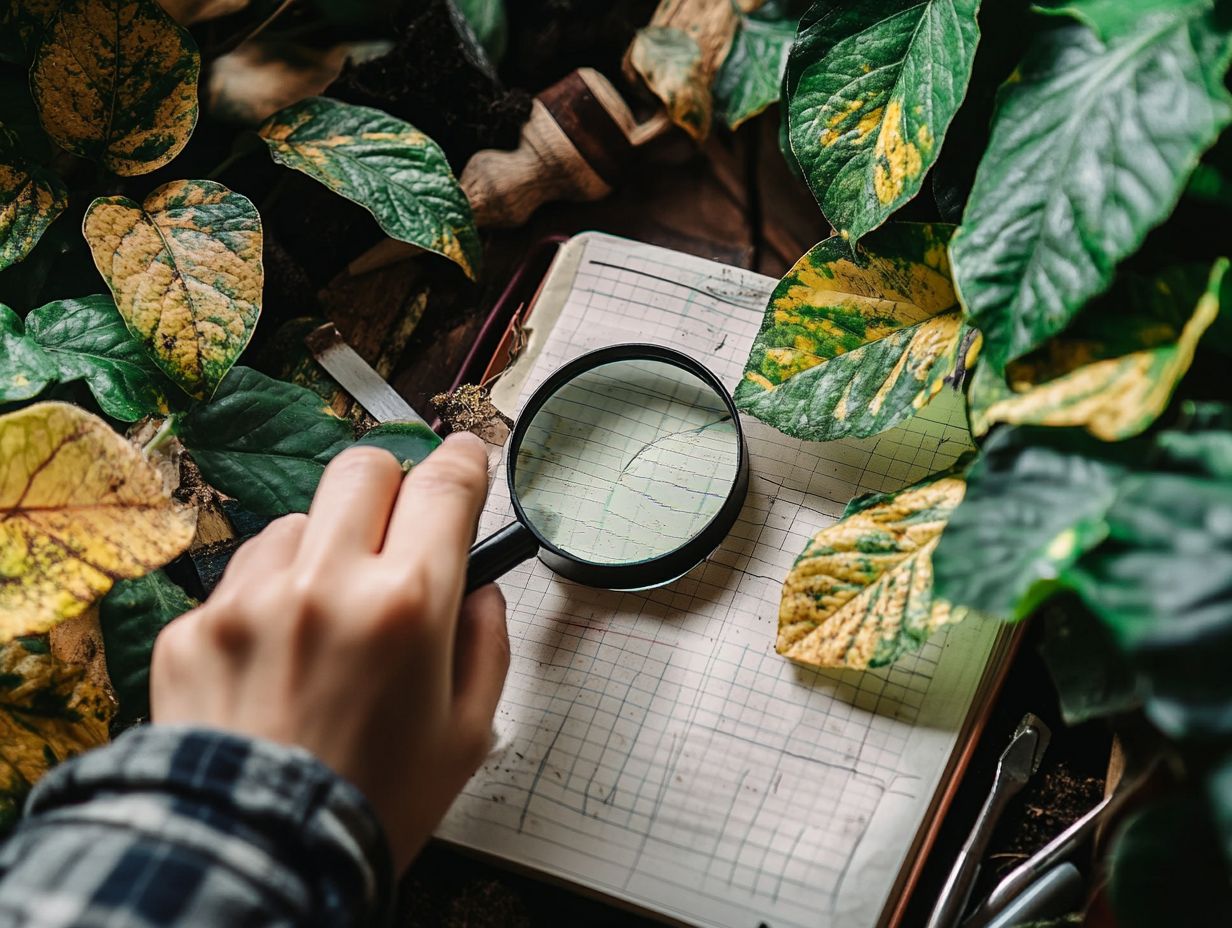
Common signs of indoor plant problems include yellow or wilted leaves, stunted growth, brown spots on leaves, and pest infestations.
How do I identify the cause of my indoor plant problems?
Start by carefully inspecting your plant for any visible signs of damage or issues. Check the soil moisture, light conditions, and the presence of pests to help determine the cause.
What can I do if my indoor plant is not getting enough sunlight?
If your plant is not getting enough sunlight, try moving it to a brighter location or investing in grow lights to provide the necessary light for your plant to thrive.
How can I tell if my indoor plant has a pest infestation?
You may notice tiny insects, webbing, or sticky residue on the plant’s leaves or stems. Some pests cause damage, such as holes in the leaves or wilted growth.
What should I do if I suspect my indoor plant has a disease?
If you notice signs of disease, like discoloration or strange growth, immediately keep the plant away from others.
Consult a plant expert for a proper diagnosis and treatment.
How can I prevent future indoor plant problems?
Inspect and care for your plants regularly.
Water them, provide the right sunlight, and watch for any signs of trouble to keep your plants healthy.

